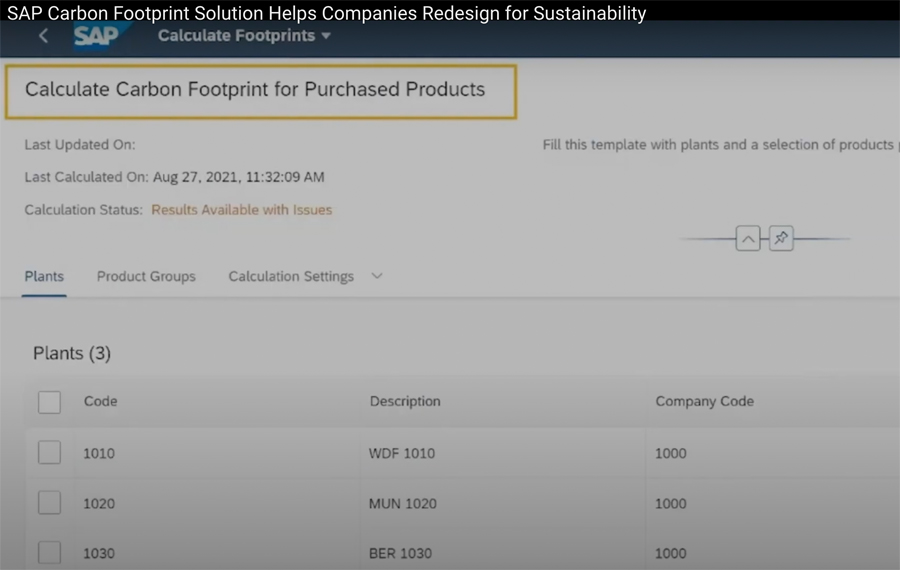WALLDORF, Germany — September 29, 2021 — SAP SE (NYSE: SAP) today announced the availability of SAP® Product Footprint Management, a solution that lets companies calculate carbon footprints for their products and across the value chain. It considers the entire product lifecycle, helping companies disclose their products’ environmental footprints to regulators and enabling them to make their products more sustainable.
SAP Product Footprint Management is part of a new portfolio of sustainability-specific business applications that deliver transparency and measurement capability across the supply chain, allowing companies to move toward lower carbon emissions and more sustainable operations.
“Customers want it, the world needs it. There is no time to waste for businesses to act more responsibly and sustainably. Sustainability goals are increasingly as important to business success as financial goals,” said Thomas Saueressig, member of the Executive Board of SAP SE and responsible for SAP Product Engineering. “When companies embed emissions data into underlying business processes, leaders can drive real change by making conscious decisions across the entire value chain. That is what scales the transition to low emission pathways, and SAP is uniquely positioned to drive this change throughout collaborative, intelligent and sustainable business networks.”
By integrating data across all solutions that govern production processes with master data from business applications such as SAP S/4HANA®, SAP Product Footprint Management can calculate the environmental impact of various production scenarios. For example, a cookie company can choose its source for chocolate based both on the cost of the raw material as well as on its carbon footprint.
SAP’s data-driven approach lets businesses embed sustainability comprehensively and gain actionable insights across the entire value chain to enable companies to transition to low-carbon business processes. Taking a differentiating approach, SAP enables businesses to proactively identify the carbon impact at the beginning of the product lifecycle instead of reactively after a product has been produced. Moreover, SAP Product Footprint Management not only equips companies with the insight to reduce carbon emissions across their value chains but can enable data exchange with customers, suppliers and business partners — driving transparency across a company’s scope 1, scope 2 and scope 3 emissions.

SAP Carbon Footprint Solution Helps Companies Redesign for Sustainability
SAP Product Footprint Management, a cloud-native solution built on SAP Business Technology Platform, is designed to measure and report greenhouse gas emissions. Proposed governmental regulations designed to combat the harmful effects of climate change could cost businesses up to $120 billion. A recent IDC survey showed linking financial and environmental indications in financial reporting, as well as reducing carbon emissions, are top topics for IT decision-makers.*
SAP’s Commitment to Sustainability
SAP has been leading by example in sustainable business practices for more than a decade. In addition to being named the software industry leader in the Dow Jones Sustainability Indices (DJSI) for 14 consecutive years, SAP’s membership in the Value Balancing Alliance and the SAP Integrated Report illustrates our commitment to integrating economic, environmental and social performance to drive business decisions.
“SAP has long had a strong, dedicated focus on its own sustainability operations. The launch of the SAP Product Footprint Management solution, combined with the WBCSD’s Pathfinder Project, represents a unique opportunity to bring together companies to jointly drive decarbonization across value chains and industries,” said Marta Muñoz, senior research director and Lead Technology & Sustainability Practice, IDC EME.
To learn more visit the SAP News Center and follow SAP on Twitter at @SAPNews.
Liked this post? Follow SwirlingOverCoffee on Facebook, YouTube, and Instagram.


